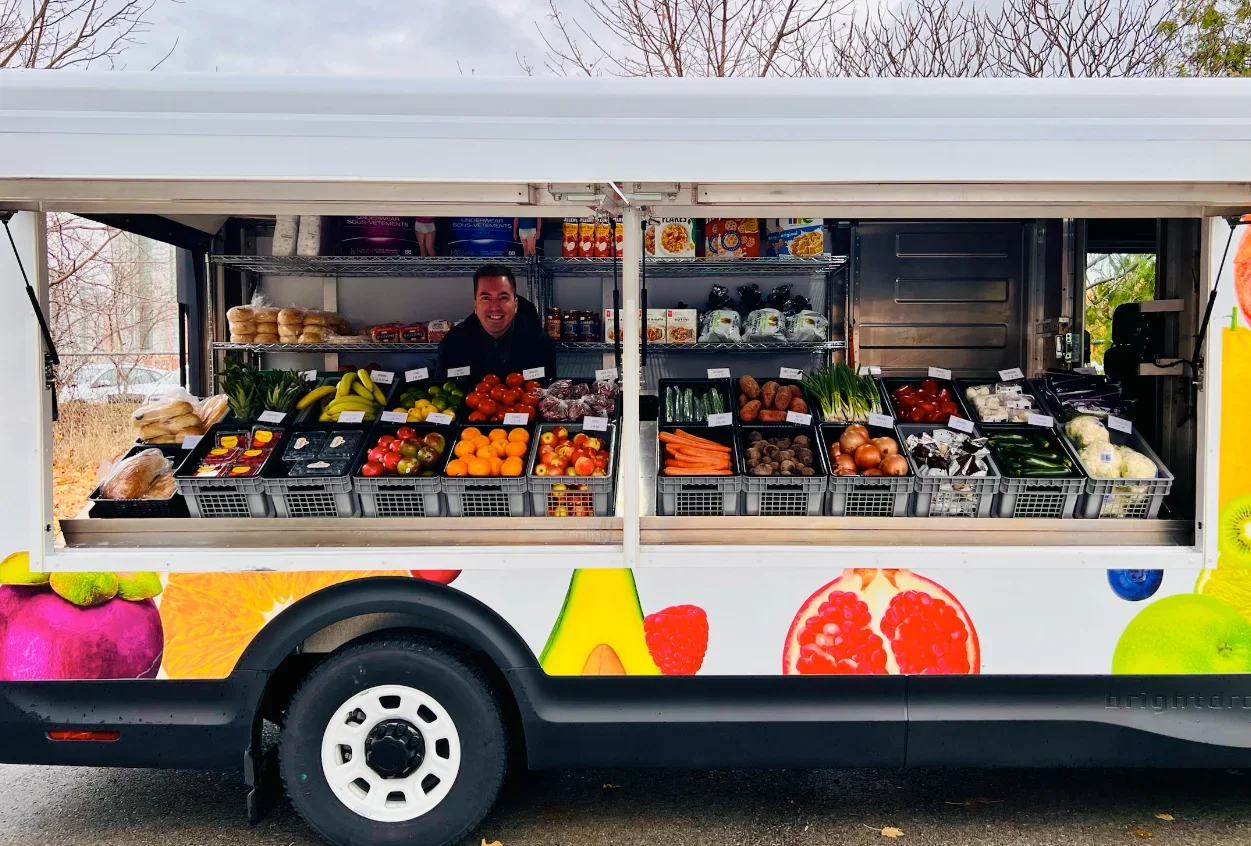Driving Change: GROW's Electric Mobile Market Expands Fresh Food Access in Niagara Falls
Mobile Produce Market Helps Grow Food Access for Ontario Community
The GROW Community Food Literacy Centre in Niagara Falls, Ontario, has joined the movement to bring fresh, healthy, accessible food directly to those who need it most. On November 28, 2024, GROW launched its electric mobile produce market program, marking a significant milestone in its mission to address food insecurity and the challenges of food deserts.
“We’re trying to really celebrate good food,” said Pam Farrell, Executive Director of GROW. This program builds on five years of food access initiatives, allowing GROW to extend its reach and provide healthy food in a more cost-effective way.
Expanding Food Access Through Mobility
GROW, a food charity based in Niagara Falls, Ontario, has been addressing food insecurity since 2019. The organization operates a low-cost market every Saturday, offering fresh produce, meat, and dairy. Other programs include food literacy classes, a community kitchen, and a small community garden.
The idea of a mobile produce market allows GROW to bring food directly to underserved neighborhoods without the high overhead costs of brick-and-mortar centers.
“We were approached by municipalities in the Niagara region who wanted similar services,” said Farrell. “From a logistical perspective, it didn’t make sense to build permanent locations.”
The Inspiration Behind Mobile Markets
For Farrell, the concept of a mobile produce market began in childhood. Growing up in Switzerland, she experienced the joy of a food bus that brought groceries to her neighborhood weekly.
“It was a big diesel bus. It became a community event,” she recalled. “I would wait with my mom and other children as the bus arrived, and it was always a memorable experience.”
Her interest in food access continued into adulthood during her doctoral studies at the University of Calgary, where she researched food literacy and critical ways to address food insecurity.
“Education and empowerment are essential to social change,” Farrell said. “Trying to bring good food to neighborhoods is at the core of food literacy.”
Partnering with The Farmers’ Truck
With the concept of a mobile produce market in mind, Farrell sought an organization to help make it a reality. That’s when she found The Farmers’ Truck.
“Farmers’ Truck’s expertise in building mobile markets was instrumental in bringing our vision to life,” Farrell said. “We’ve relied on Fred (Farmers’ Truck CEO) and his team to help customize the truck to our needs.”
GROW opted for the electric BrightDrop EV600, aligning with its commitment to sustainability.
“The sleek, colorful design will be hard to miss,” Farrell said. “It’s eye-catching and reflects our mission of providing fresh, accessible food in an inclusive environment.”
A Sustainable Mobile Market Model
The program, supported by grant funding from the Public Health Agency of Canada, will operate for two years. During this time, GROW will collect data to measure the mobile market’s impact on food access, health, and well-being.
The mobile market offers food at low prices—apples for 25 cents and bananas for 10 cents—ensuring affordability while supporting local farmers. This model allows GROW to maintain sustainability and dignity for consumers.
“People want to pay for their food and have choice,” Farrell explained. “Providing affordable, good-quality produce creates a sustainable program that meets community needs.”
Building Community Connections
The mobile market will operate at up to 10 locations per week, focusing on areas identified by local public health officials, community partners, and people with lived experiences. Stops will include schools, libraries, and community hubs, combining food access with other essential services.
Farrell said the excitement is building. “We’ve been working on this for years, and it’s amazing to see it come to life. This is a milestone for us as a young organization that has grown significantly in five years.”
Immediate and Long-Term Impact
Farrell shared that the feedback from the organization’s brick-and-mortar market has been overwhelmingly positive, and she expects similar results from the mobile market.
“People are less stressed about food and are trying new vegetables,” Farrell said. “Over time, we’ve seen healthier outcomes, like people getting off diabetes medication and feeling more energized. Programs like this make a big impact on people’s lives.”
Conclusion
The GROW mobile produce market is a game-changer for food access in Ontario, proving that innovative, sustainable solutions can address food insecurity. By creating a model that is accessible, affordable, and community-focused, GROW is paving the way for other organizations to follow.
To learn more, visit growcflc.com.

